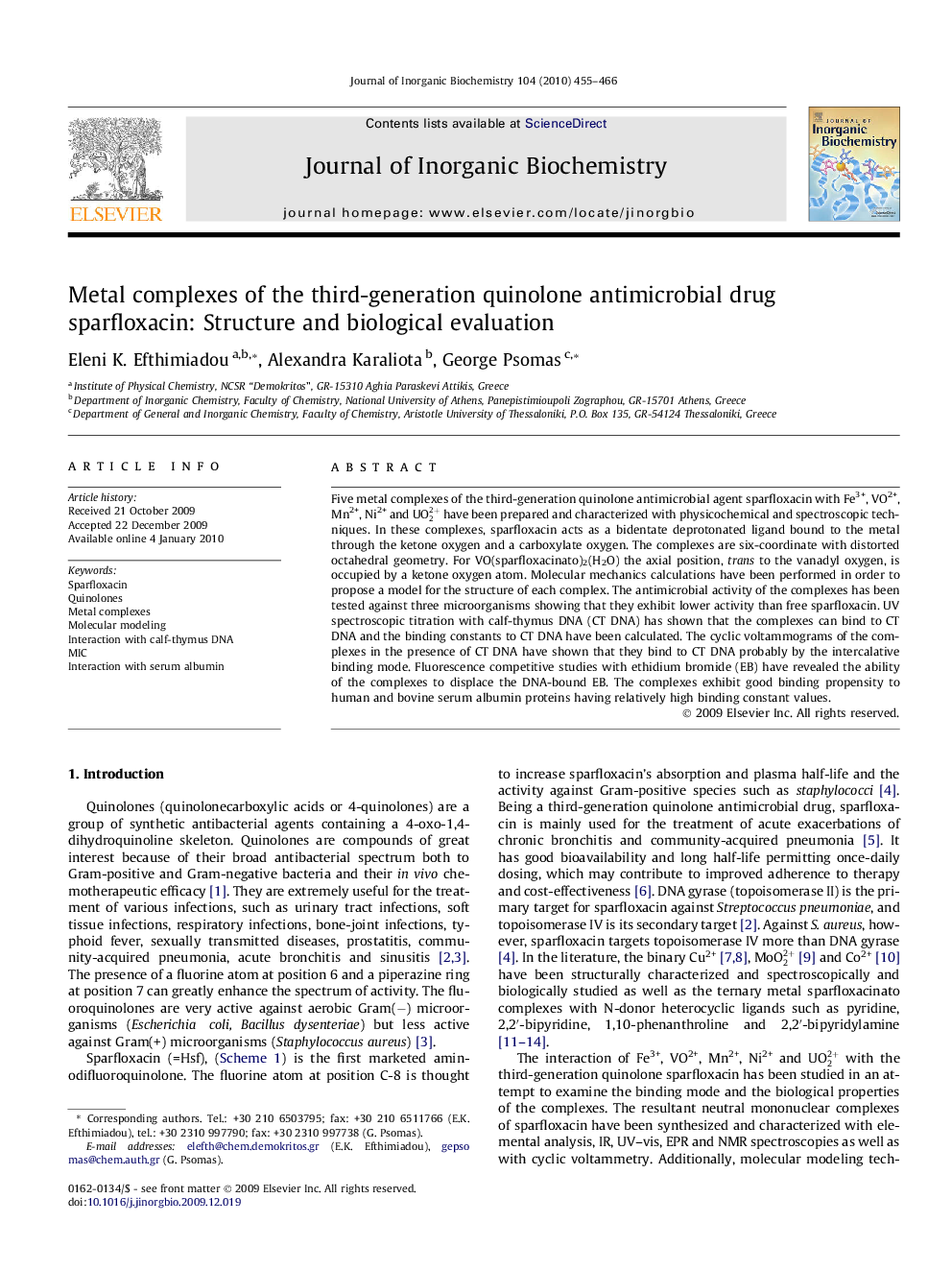| Article ID | Journal | Published Year | Pages | File Type |
|---|---|---|---|---|
| 1317991 | Journal of Inorganic Biochemistry | 2010 | 12 Pages |
Five metal complexes of the third-generation quinolone antimicrobial agent sparfloxacin with Fe3+, VO2+, Mn2+, Ni2+ and UO22+ have been prepared and characterized with physicochemical and spectroscopic techniques. In these complexes, sparfloxacin acts as a bidentate deprotonated ligand bound to the metal through the ketone oxygen and a carboxylate oxygen. The complexes are six-coordinate with distorted octahedral geometry. For VO(sparfloxacinato)2(H2O) the axial position, trans to the vanadyl oxygen, is occupied by a ketone oxygen atom. Molecular mechanics calculations have been performed in order to propose a model for the structure of each complex. The antimicrobial activity of the complexes has been tested against three microorganisms showing that they exhibit lower activity than free sparfloxacin. UV spectroscopic titration with calf-thymus DNA (CT DNA) has shown that the complexes can bind to CT DNA and the binding constants to CT DNA have been calculated. The cyclic voltammograms of the complexes in the presence of CT DNA have shown that they bind to CT DNA probably by the intercalative binding mode. Fluorescence competitive studies with ethidium bromide (EB) have revealed the ability of the complexes to displace the DNA-bound EB. The complexes exhibit good binding propensity to human and bovine serum albumin proteins having relatively high binding constant values.
